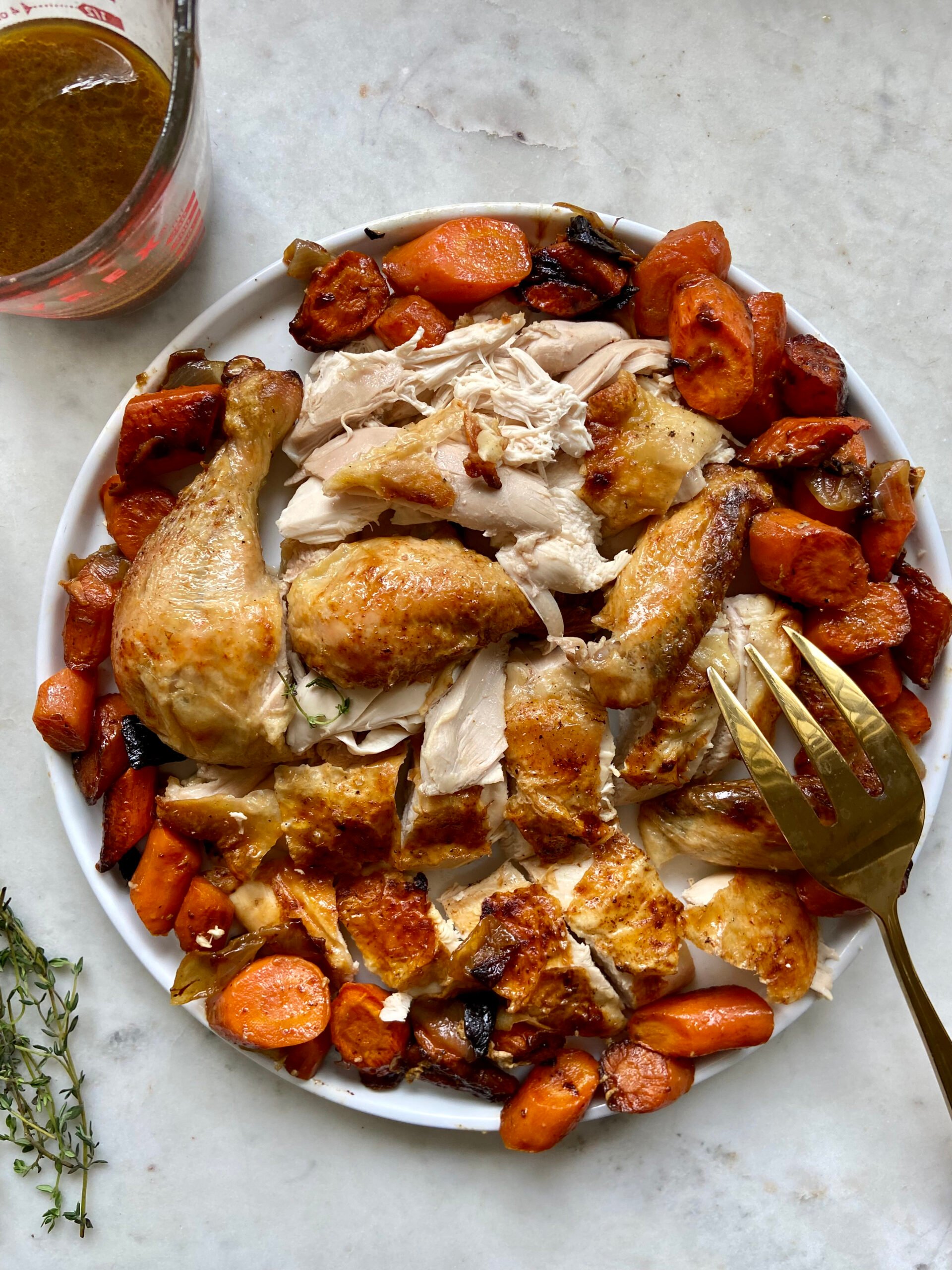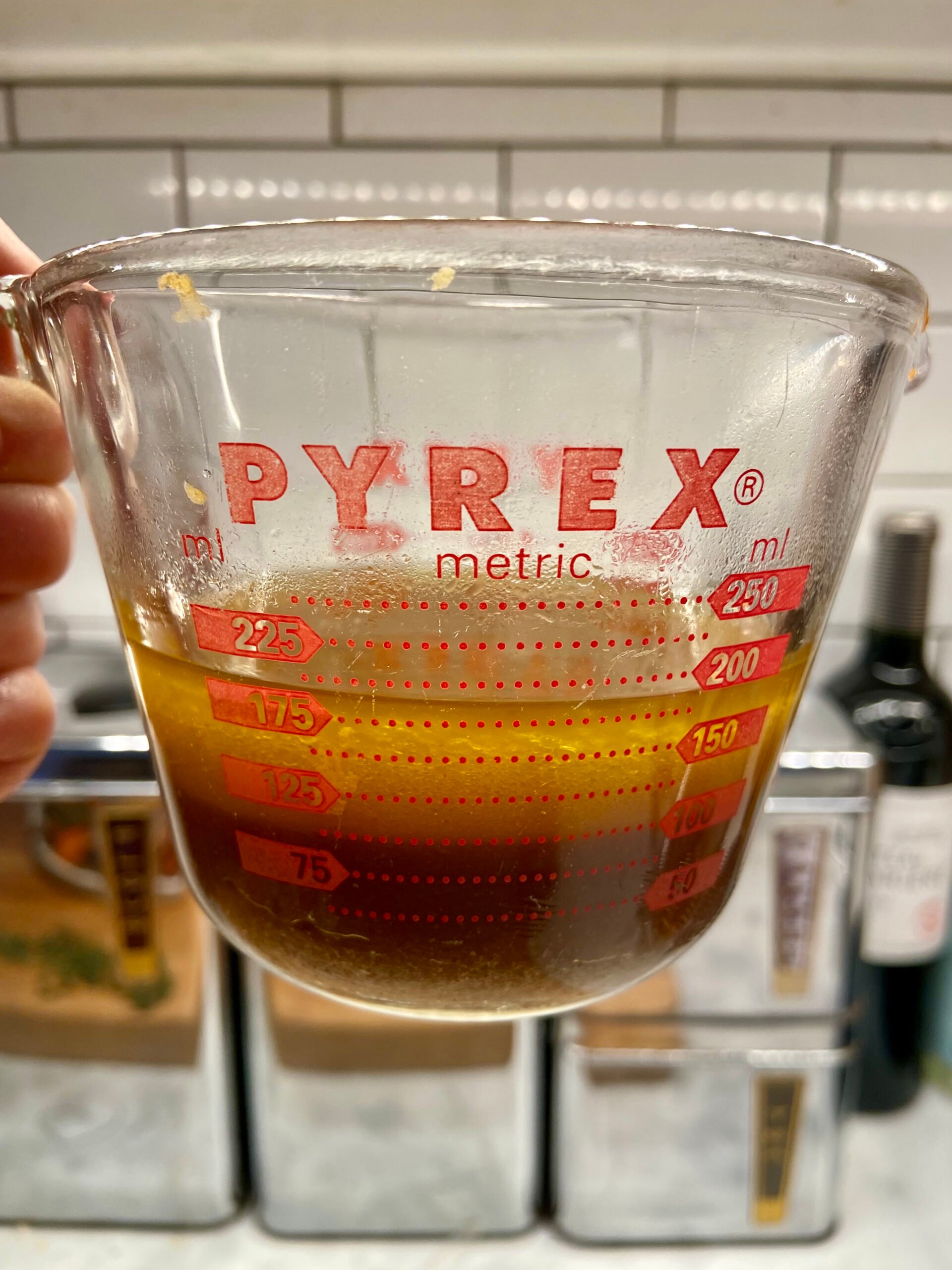

When I was first teaching myself how to cook, devouring as many food magazines and newspaper dining sections as I could, I remember coming across a quote from a chef that went something like this: “Anyone who thinks it’s easier to cook frozen food than a meal from scratch has never roasted a whole chicken.” The implication being that any old Joe Shmo could throw a bird into a roasting pan, press a few buttons on the oven, and an hour later have a perfect dinner. This appeared to be the conventional wisdom among seasoned food writers: In the ’90s cooking bible How to Cook Everything, Mark Bittman described his “Simple Roast Chicken” recipe as elegant enough for a weekend but simple enough for a weeknight. I, too, pushed the easy-peasy angle. “Roast Chicken with Vegetables” was one of the first posts I ever ran on my blog because, I reasoned, everyone should know how to do something so basic.
That was decades ago, and, today, I’m ready to call BS on all of us. I realized something a month or two ago while I was attempting to truss my bird into submission: Roasting a whole chicken is, in fact, a royal pain in the neck. Even after all these years doing it, practicing it, writing up multiple recipes for it. I feel like I’ve never made one the same way twice, and still question basic steps in the recipe: Rinse or not rinse? Truss or not truss? Flip or no flip? Rack or no rack? High heat, short cooking time or medium heat, longer cooking time? Pan juices or gravy? On top of that, it feels like I use an army of cutting and carving boards, wooden spoons, basting brushes, knives, strainers, butcher’s twine, measuring cups, and handling a whole chicken is messy — both when it’s raw and when it’s just out of the oven. And don’t get me started on carving! Omg, how is this considered a simple weeknight dinner? Am I missing something? Whoever’s the publicist for Roast Chicken, I want to hire her.
But in spite of all this whining, I’ll never stop making my roast chickens, never stop relying on them for go-to family comfort food. They do somehow reliably turn out great, and there’s hardly anything as delicious or universally loved in my house, especially when surrounded by potatoes or carrots that have soaked up the chicken’s pan juices.
I guess I’ve just been wishing for a recipe that didn’t pretend the whole operation was as easy as pouring milk into a bowl of cereal. A recipe that held my hand and told me “Don’t worry, this is going to be amazing, but also, just so you know, a little bit fussy.”
So, here you go…
Roast Chicken with Carrots and Pan Juices
Couple common chicken-roasting steps I’ve decided to skip over the years in the interest of streamlining: 1) I don’t rinse my bird. Excess water creates steam, which prevents the skin from getting crispy. I still pat the chicken very dry (inside and out) with a paper towel. 2) I don’t flip my bird mid-roast or adjust the heat. My friend and recipe developer Victoria Granof told me neither was necessary if you’re not blasting it on high heat and her advice has never let me down. 3) Lastly, I no longer serve my chickens with gravy. I find it’s just one more step, one more pot, one more whisk, and the simple carrot-and-onion-flavored pan juices are every bit as satisfying. One thing I don’t skip? Trussing. It makes the bird easier to handle and ensures a more even roast. Everybody does it differently but here are two common ways.
7 medium carrots, cut into large-ish chunks as shown
1 yellow onion, chopped roughly
2 tablespoons olive oil
Kosher salt and freshly ground black pepper
1 whole roasting chicken, between 3-4 pounds (make sure to check for the little packet of giblets inside cavity and remove if it’s there), at room temperature, rinsed and patted very dry with a paper towel (outside and inside the cavity)
2 tablespoons butter, melted
1/2 small lemon
12-15 sprigs fresh thyme
Heat oven to 425°F. Arrange carrots and onions in a roasting pan, toss with olive oil and and season with salt and pepper. (The vegetables will act as a rack for the chicken and flavor the chicken juices that drip through them.)
Place the chicken on a cutting board, stuff its cavity with the lemon and thyme sprigs, and truss it. (See headnote.) Place the chicken breast-side up on top of the carrot-onion bed. Using a basting brush, brush the chicken’s skin all over with the melted butter, and season with salt and pepper.
Place the roasting pan in the middle rack of your oven. (The general roasting rule I use is 18 minutes per pound, and I literally break out the calculator and multiply by the exact decimal point.) You know your chicken is done when the skin is golden and the juices run clear (not pink or red) when the thickest part of the thigh is pierced with a sharp knife.
Remove the roasting pan from the oven and set near your carving board. Before removing the chicken from the pan, and using oven mitts, tip the hot chicken to let the juices from the bird’s cavity run into the pan. (If the juices are red, put the chicken back in the oven.) Remove the chicken to the carving board using your oven mitts. Untie the trussed legs, and let it sit for 5 to 10 minutes to cool. While it’s resting, place a strainer over a large measuring cup or mixing bowl (I do this in the sink) and pour the roasted vegetables and pan juices through the strainer…
…Let the juices and fat settle (shown above) then skim off as much of the fat from the top as you can. Carve the chicken as best as you can (no one is photographing your dinner!) and serve with the strained schmaltzy carrots and a drizzle of pan juice.
Enjoy.
P.S. A restaurant surprise I’m still thinking about two decades later, and 5 things to do with a basic chicken cutlet.
(Photos by Jenny Rosenstrach)


